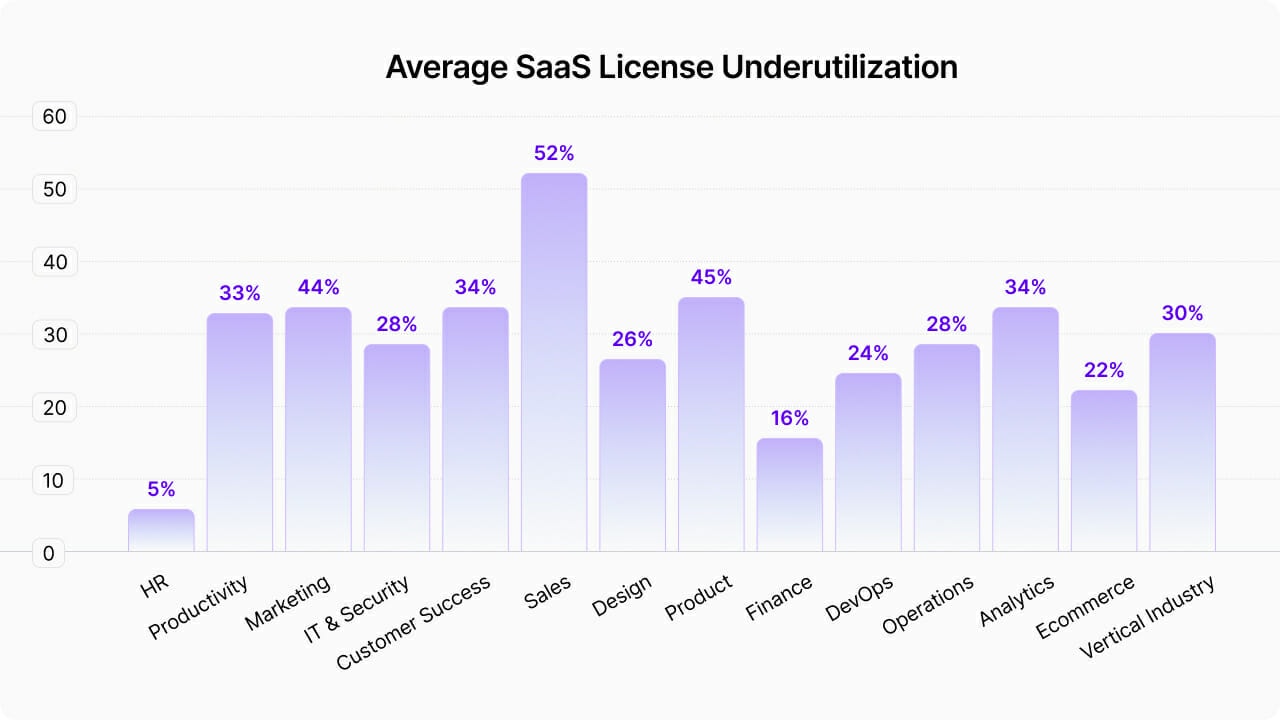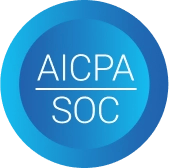Software license management: How to track SaaS licenses
Aimee Manning | MAR 23, 2023
6 min read
Cloud-based software has fast become one of the most expensive outgoings in any modern organization. So much so, that $1 in every $8 of an organization’s total expenditure is now allocated to SaaS.
Yet despite this, it’s an area of spending that is often overlooked when it comes to reducing overall costs. A surprising fact, given that it is perhaps one of the easier commodities to cut back on.
But as companies continue to grow their SaaS stacks by 18% every year, and with prices rising at a frankly unsustainable rate — four times faster than general inflation alone can account for — it’s a problem that businesses need to get on top of. And fast.
The best way to do this? Through software license management.
Here’s everything you need to know.
What is software license management?
By definition, software license management is the process of tracking and documenting the use of software across an organization.
Unlike software asset management (SAM), which involves tracking and managing a company’s entire repository of both cloud and on-premise software, software license management — or more specifically SaaS license management — is focused solely on the tracking of cloud-based applications.
So, how does it work?
At its most basic level, SaaS license management platforms ensure that companies not only have total visibility of the software applications in use across the business, but that these tools are actually being used by the intended employees.
Any software license management tool you consider using should therefore be able to:
- Analyze license usage rates across all your SaaS tools, helping you to determine whether each license or “seat” is being utilized
- Provide insights into whether or not employees are on the right tier level for their requirements
The benefits of tracking software licenses
So, why’s it needed? What are the specific benefits?
Avoid wasted SaaS spend
One of the biggest upsides of tracking SaaS licenses is that it can provide your business with opportunities to reduce spend. As an example, by monitoring license usage, you can identify those that are being underutilized and either reassign them to new hires, or cancel them at the point of renewal.
It also can’t be ignored that in the average company, 33% of SaaS tools go underutilized — as high as 52% in departments such as sales — so using this insight to rightsize or terminate your subscriptions can save you a potentially substantial amount of money.
In fact, companies with more than 600 employees could easily be wasting close to £1M in SaaS spend, solely from underutilized tools.

Then there’s the fact that it can help to identify duplicate tools and redundant apps. In other words, the tools that have either been subscribed to more than once by different departments — something that often happens with project collaboration software — or those that have overlapping features.
Here’s the thing though — you can only track what you know exists. Which isn’t necessarily everything.
This is why it’s also important that any SaaS management platform you consider using enables SaaS discovery, providing you with total oversight of your entire software portfolio.
SaaS renewal management
With SaaS stacks continuing to proliferate, it can become increasingly difficult to keep on top of your renewal dates.
The problem is, with 89% of SaaS contracts including auto-renewal clauses, you run the very real risk of missing renewal deadlines and getting tied into contracts that you no longer require, often at an increased price.
Without a system in place to track the software and licenses, that is.
Software license management not only prevents this from happening by alerting you to impending renewals, but a solution such as Vertice can also make use of your license usage analytics to negotiate a better deal on your behalf, based on the specific needs of your business.
For example, by looking at the number of licences you actually require compared to your contracted allowance, as well as the tier level for each user.
Eliminate shadow IT
There’s no denying that SaaS has transformed the way businesses operate — and largely for the better — but the accessibility of these tools and low barriers to purchase have left many organizations facing shadow IT.
In other words, the use of software without explicit approval from IT departments.
With a system in place to accurately track and manage software licenses, businesses can ensure a centralized approach to procuring these tools, while mitigating the risks. Risks such as:
- Data security breaches
- Productivity problems
- Compliance violations
How to track software licenses
SaaS license management is a crucial process for any business that makes use of software. But what does it look like? In other words, how can you effectively track your SaaS tools?
Ultimately, you have two options:
Use a manual spreadsheet to track SaaS licenses
When it comes to keeping track of your licenses, it can be easy to assume that it’s possible with a spreadsheet.
The problem is, this manual approach to SaaS management is flawed.
Why?
Well, not only is it open to human error and inaccuracies, but there’s also no guarantee that every single subscription will be logged, or that the information provided will be correct.
Plus, given that the average company now uses a total of 110 software applications, spending an average of $6,200 on SaaS every year for each employee, keeping track of this manually is simply unsustainable for the majority.
So, what’s the other solution?
Automation.
Use an automated SaaS management platform
To effectively manage sprawling software stacks, you ultimately need a robust system of record in place.
One that can:
- Help you identify the software in use across your organization
- Provide you with total visibility of your entire software portfolio
- Keep on top of your numerous renewal deadlines and notice periods
- Identify licenses that are being underutilized and tools that are overprovisioned
- Flag users that may not need to be on a particular platform level
- Provide easily accessible diligence insights, minimizing the burden on legal, security and compliance teams during contracting
Having access to this insight is only one advantage though. You also want to know that these insights are being leveraged to ensure you’re getting the best possible deal on every SaaS renewal and new purchase.
As a tech-enabled SaaS purchasing platform, Vertice makes this possible.
Not only do we use this intel to right-size your subscriptions, ensuring maximum cost-saving opportunities, but with access to the pricing and discounting data of more than 13,000 SaaS providers, our expert team of negotiators will secure you the best price and terms on any contract.
See for yourself how much you could be saving on your annual SaaS spend with a free cost savings analysis, or alternatively search our vendor hub to access pricing insights for thousands of different software providers.

